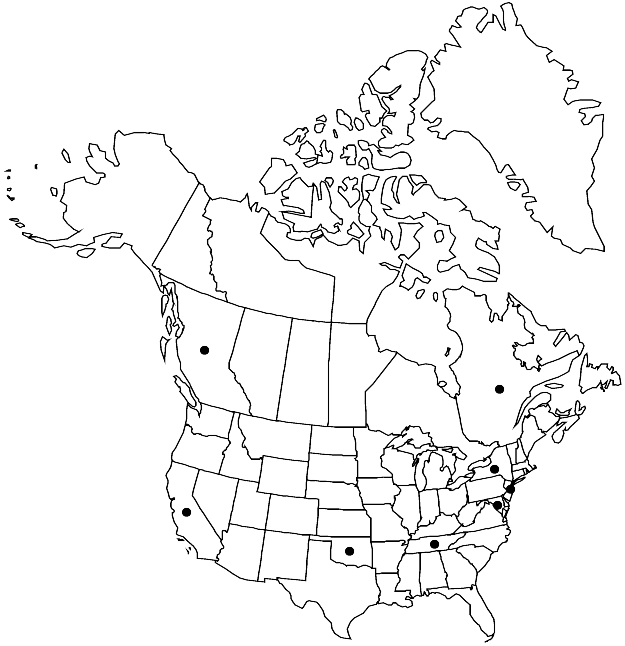Rosulabryum rubens
Novon 19: 399. 2009.
Plants small, red-green. Stems 0.5–2 cm, fertile stems evenly foliate to weakly rosulate, innovations evenly foliate. Leaves of main rosette and innovations similar, innovation leaves smaller; somewhat irregularly twisted to contorted when dry, erect-spreading when moist, ovate, weakly concave, 1–2.5 mm; base not decurrent; margins recurved to mid leaf, distinctly serrulate distally, limbidium moderately distinct, of 1 or 2 rows of cells; apex acute; costa short-excurrent, awn pigmented; proximal laminal cells short-rectangular; medial and distal cells rhomboidal, 15–20 µm wide, 3–4: 1, walls thin, not porose. Specialized asexual reproduction by rhizoidal tubers, on short rhizoids at base of stem, crimson, red to dark red, brighter than rhizoids, (120–) 150–300 µm, cells strongly protuberant. Sexual condition dioicous. Capsule nutant, red to redbrown, cylindric, 2–3 mm.
Phenology: Capsules mature Apr–Aug.
Habitat: Disturbed soil, concrete
Elevation: low to moderate elevations (0-1000 m)
Distribution

Introduced; B.C., Que., Calif., Md., N.J., N.Y., Okla., Tenn., Europe, s Asia (India), Australia
Discussion
Rosulabryum rubens was probably introduced from Europe and is likely to be more widely distributed in temperate North America than records indicate. Although R. rubens was originally considered related to Gemmabryum subapiculatum, morphology as well as recent molecular work support a position near R. capillare.
Selected References
None.
Lower Taxa
"um" is not declared as a valid unit of measurement for this property."narrower" is not a number."height" is not a number."narrow" is not a number.